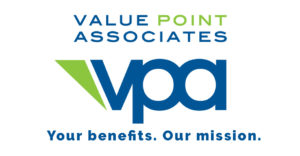
How employers can cash in on SECURE 2.0 tax credits
Offering a 401(k) to your employees is more affordable than ever
In 2019, Congress passed the Setting Every Community Up for Retirement Enhancement (SECURE) Act in an effort to improve Americans’ financial readiness for retirement. In December 2022, SECURE 2.0 Act was signed into law, providing a package of retirement reforms meant to strengthen the initial legislation.
SECURE 2.0 expands coverage, simplifies plan rules, and offers significant tax incentives to smaller employers to encourage them to offer 401(k) plans to their employees. The long-term goal is to expand access to retirement savings plans and ultimately improve retirement outcomes for millions of Americans who work for small businesses.
With SECURE 2.0, employers with 50 or fewer employees have several opportunities to cash in on tax credits by establishing a 401(k) plan, including having 100% of your start-up costs covered.
A word about the value of tax credits vs tax deductions
Tax deductions reduce the amount of your income that’s subject to taxes, but tax credits reduce the amount of taxes you owe dollar for dollar. Let’s do a simple comparison.
A $1,000 tax deduction would save you $220 on your taxes, if you fall into the 22% tax bracket.
But a $1,000 tax credit would lower your tax bill by $1,000 – which is why tax credits are generally more valuable than deductions.
Start-up tax credit
Two-thirds of small businesses don’t offer a competitive retirement plan to their employees, primarily because they believe they can’t afford one. For employers with 50 or fewer employees, SECURE 2.0 increases the startup tax credit for from 50% to 100%. So your startup costs are completely covered (up to a maximum of $5,000).
Incentives for matching contributions
For small businesses that sponsor a new defined contribution plan, SECURE 2.0 offers a tax credit for employer matching contributions. The annual maximum for this credit is $1,000 per participant, and it covers 100% of employer matches for the first two years after plan creation, then 75% in year 3, 50% in year 4, and 25% in year 5, before falling to zero in year 6. So if you establish a new defined contribution plan with 15 participants, you’ll lower your tax bill by $15,000 the first two years.
Automatic enrollment
In an effort to improve retirement outcomes for more workers, SECURE 2.0 includes a provision for automatic enrollment.
Beginning in 2025, employers who start a new retirement plan will be required to automatically enroll employees with a default contribution rate of at least 3% of an employee’s salary, which will increase by one percent annually until it reaches at least 10%. Employees must opt out if they don’t want to participate. The logic behind this is sound: making employees opt out of automatic enrollment rather than asking them to opt in will increase retirement plan participation and ultimately improve retirement outcomes.
As an added incentive for employers, a tax credit of $500 is available for the first three years after you adopt an automatic enrollment period.
VPA makes it easy and affordable to offer a quality retirement plan
When you offer a 401(k) plan to your employees, you’re typically the plan sponsor. That means you handle the administrative responsibilities and assume ERISA fiduciary liability, which can put your business and personal finances at risk.
With VPA as your plan sponsor, we assume much of that risk and handle the administrative responsibilities. So you can focus on what you do best—building your business.
Let VPA help you make the most of SECURE 2.0 for you and your employees by helping you set up an affordable retirement plan.
Each employer situation is different. Consult your tax accountant for your specific eligibility.
